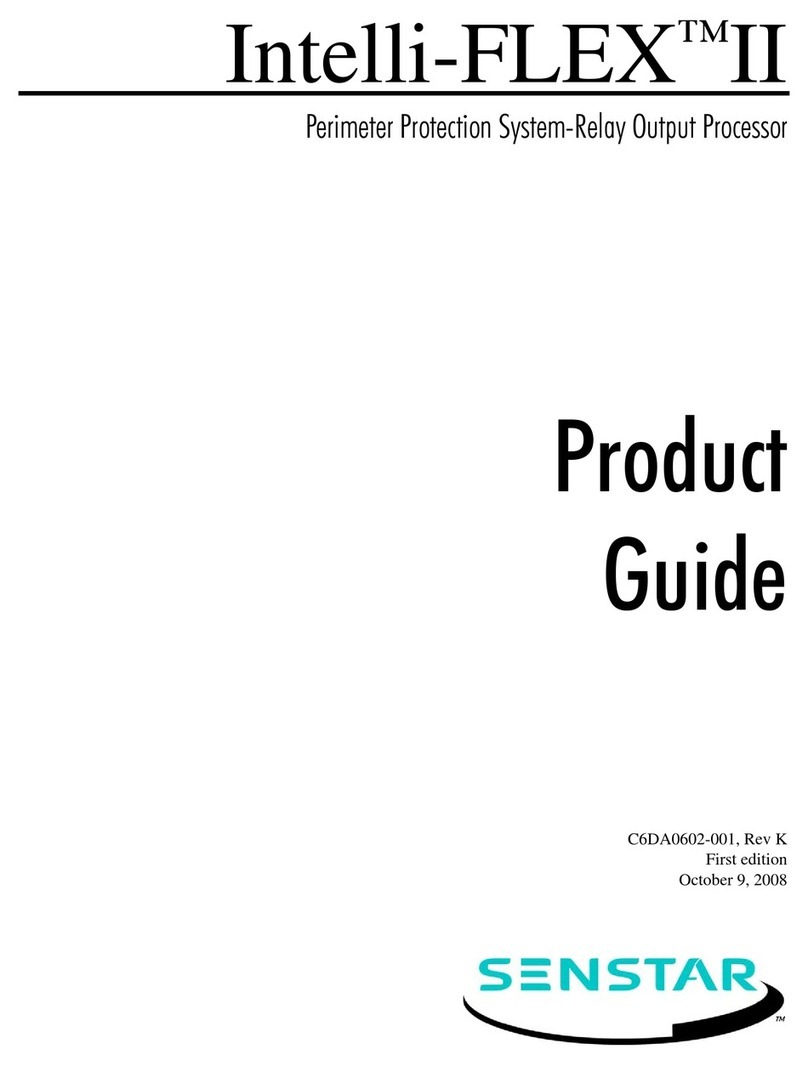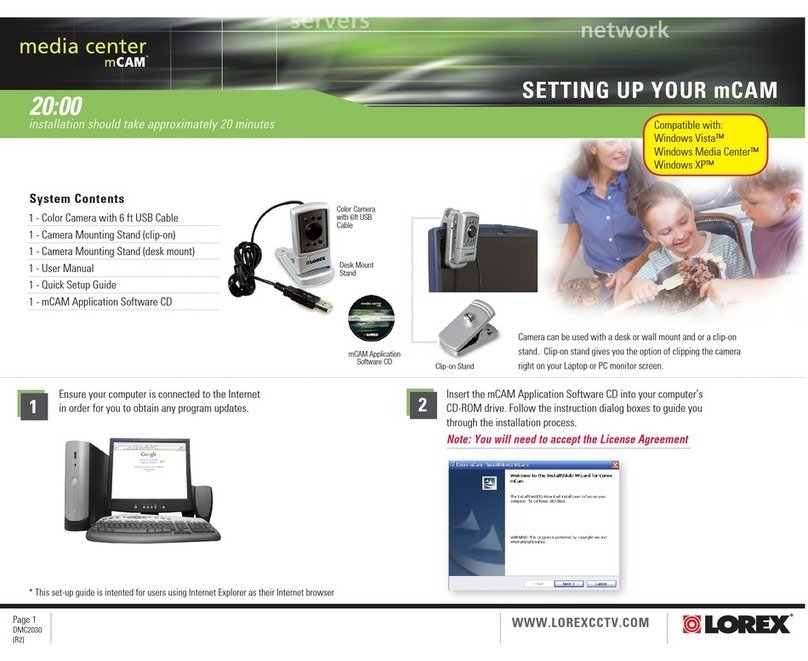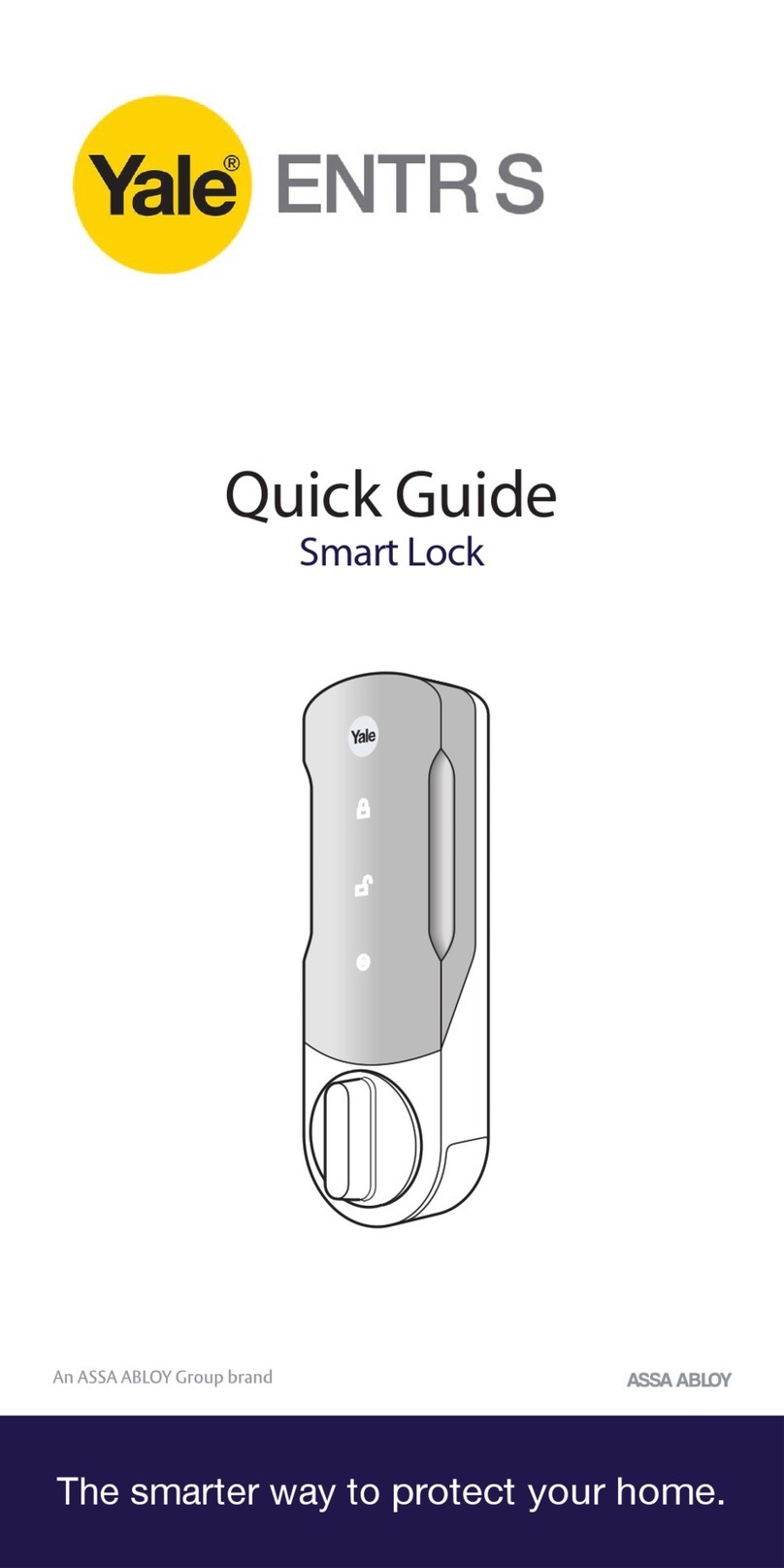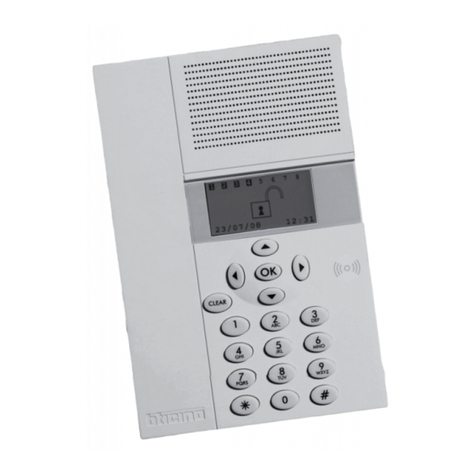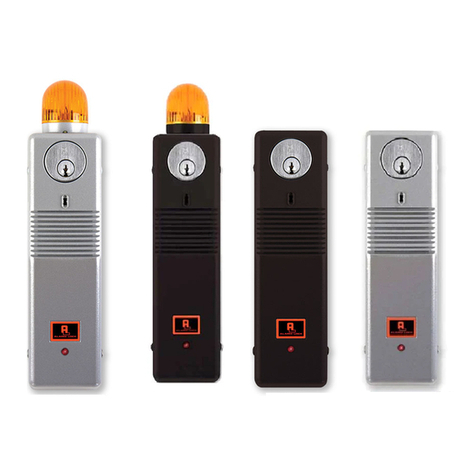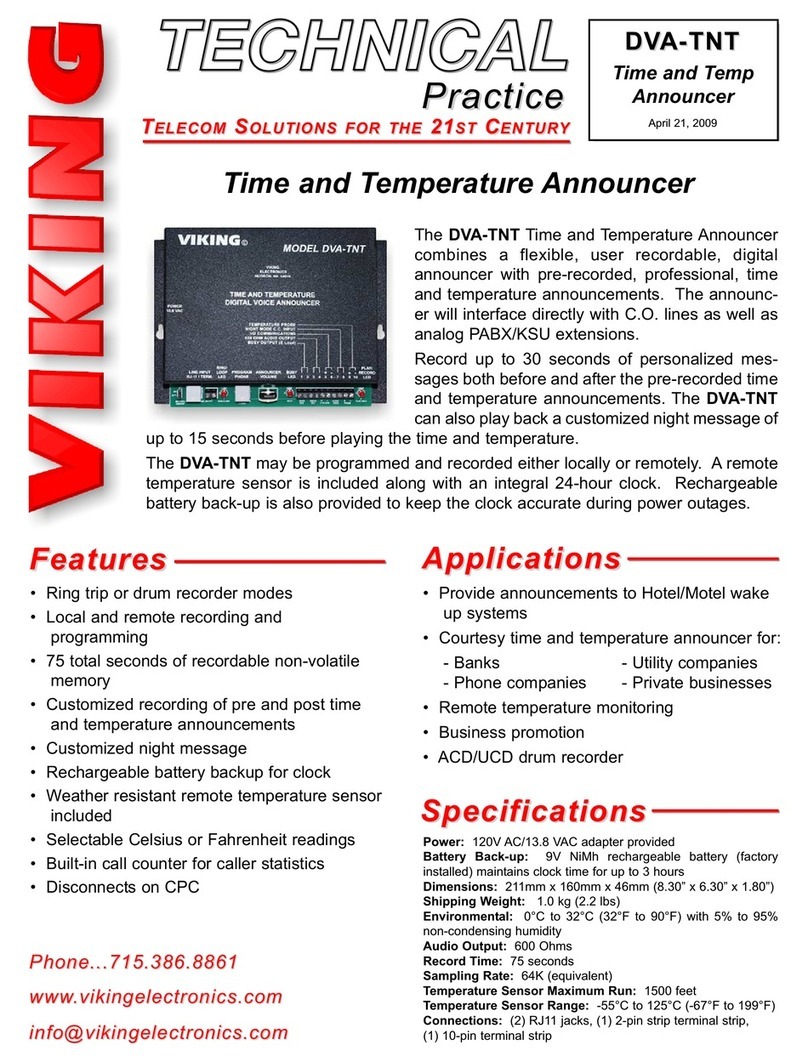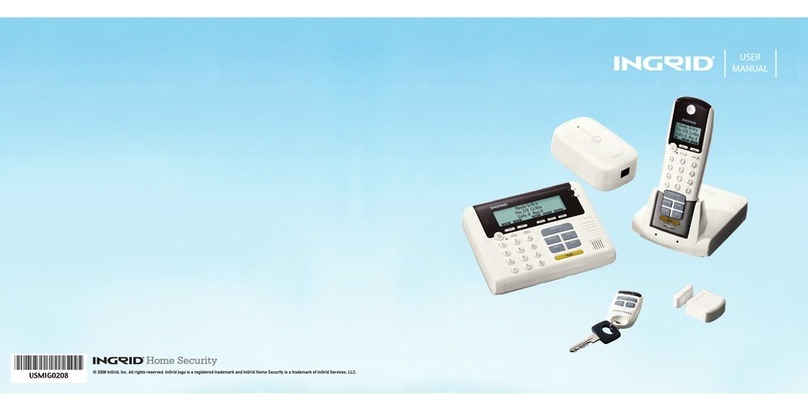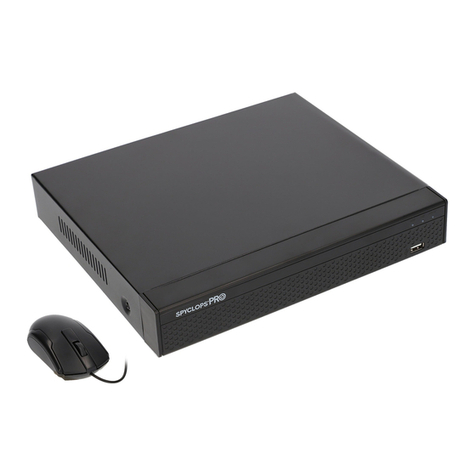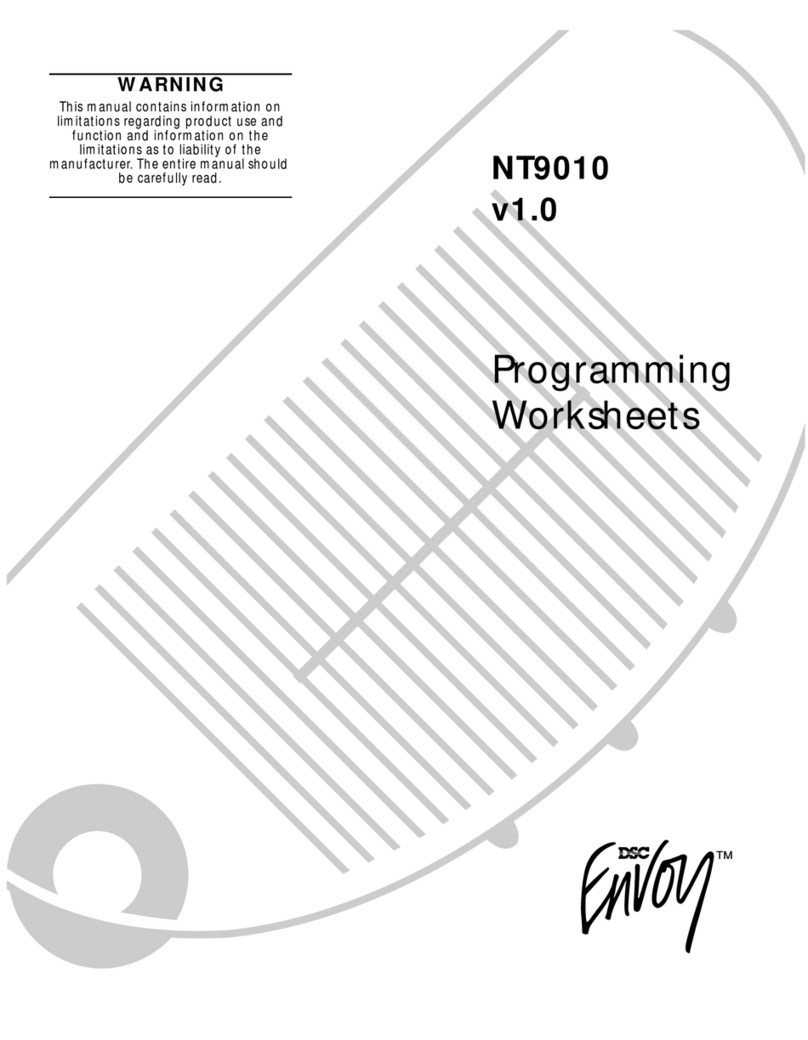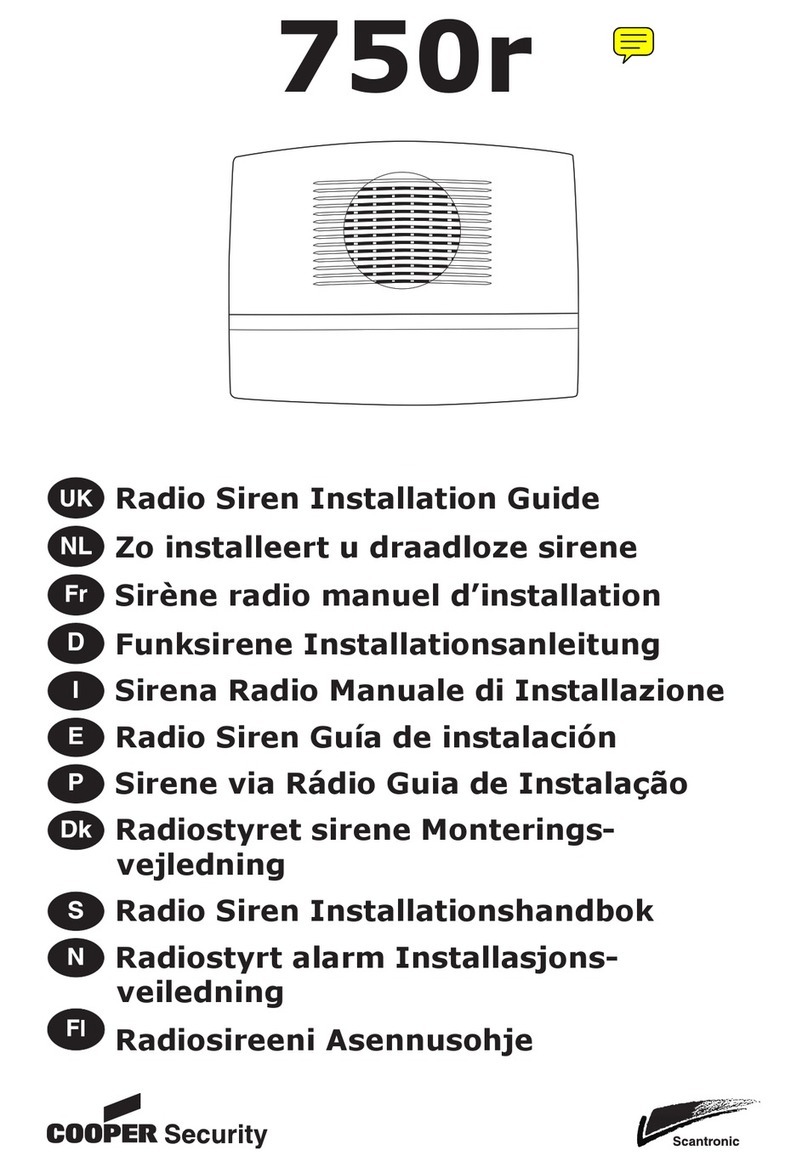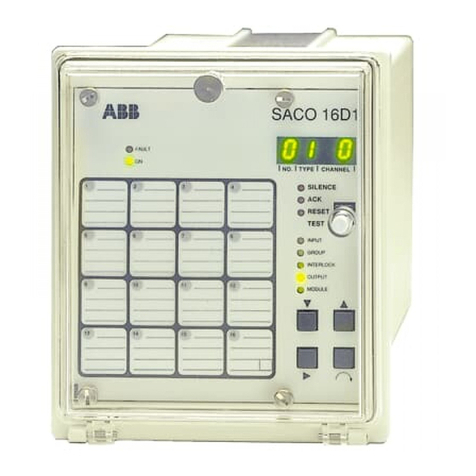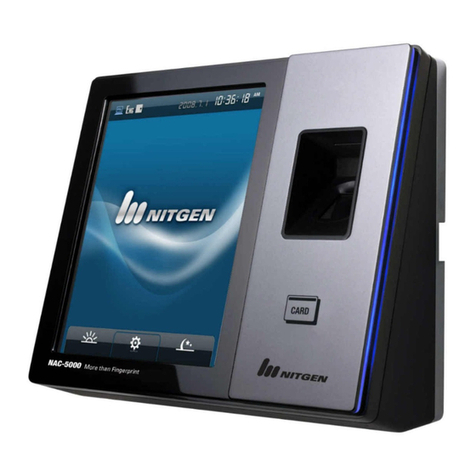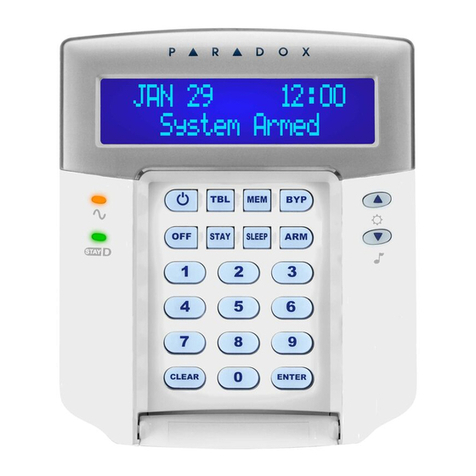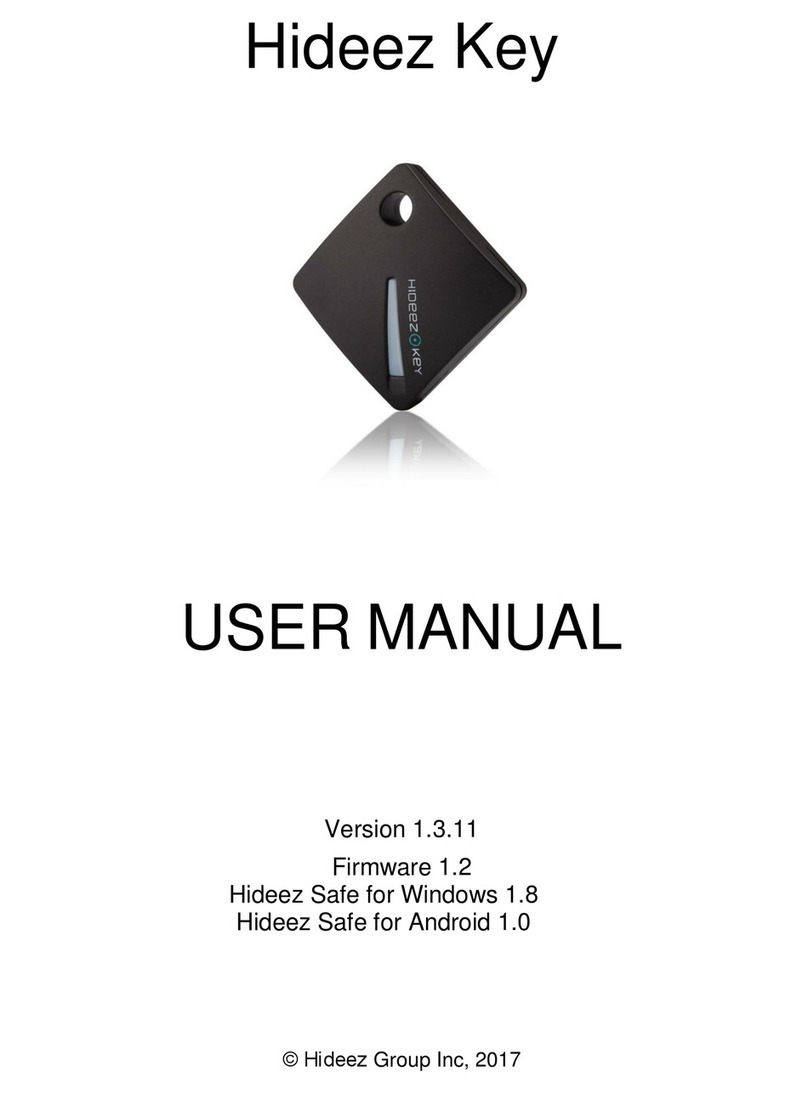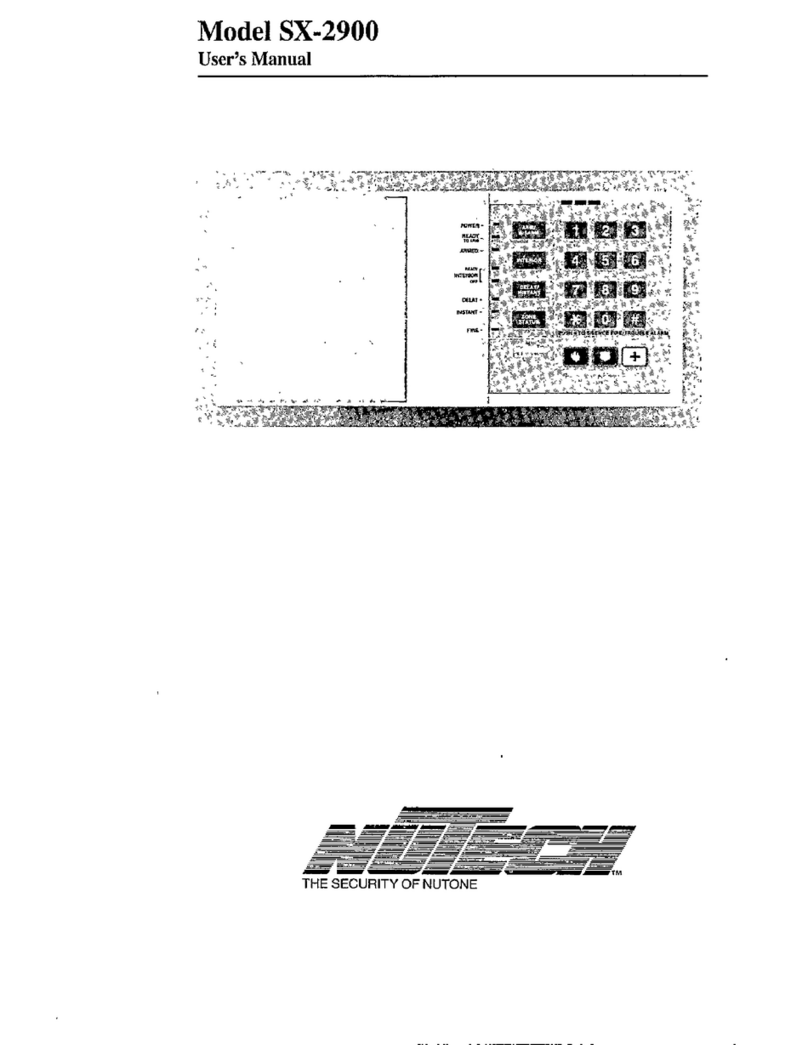SENSTAR Flash User manual

Personal Alarm Locating System
Flash™/Flare®
PPD Maintenance Manual
T1DA0502-002, Rev. A
May 26, 2008
Software Version 1.7 and above
Regional
offices Senstar Corporation U.S. U.K. Europe Latin America
Address: 119 John Cavanaugh
Dr. 43180 Osgood Rd. Orchard House,
Evesham Rd. Reidheimer Str. 8 Nueva Italia No. 5
Col. Lomas De La
Selva
Carp, Ontario Fremont, CA Broadway, Worc. 88677 Markdorf Cuernavaca,
Morelos
Canada K0A 1L0 USA 94539 U.K. WR12 7HU Germany 62270, Mexico
Phone: +1 (613) 839-5572 +1 (510) 249-1450 +44 (1386) 834433 +49 (7544) 95910 +52 (777) 313-0288
Toll Free: 1-800-676-3300
Fax: +1 (613) 839-5830 +1 (510) 249-1540 +44 (1386) 834477 +49 (7544) 959129 +52 (777) 317-0364
Website: www.senstar.com
E-mail: [email protected]
All material, including technical data, designs, knowledge, and ideas contained in this document
are considered proprietary, and the exclusive property of Senstar Corporation, and shall not be
used, disclosed, reproduced, or transmitted in any form or by any means, electrical or
mechanical, including photocopying, recording, or by any information storage or retrieval
system, without permission in writing from Senstar Corporation.

PPD Maintenance Manual
T1DA0502-002, Rev A Page 2
Senstar Life Safety Division
13873 Park Center Road, Suite 316
Herndon, VA, USA, 20171
Tel: 703-463-3083 Fax: 703-421-2149
Toll free: 1-888-290-4646
Revision History
January 2000 A76321 draft A.0 first draft
December 2001 A76321 rev 1.0 initial release
February 2002 A76321 rev 1.B update programmer jumper layout, old programmer
April 2002 A76321 rev 1.C update programmer jumper layout, new programmer
August 2002 A76321 rev 1.D add details about new PPD transmitter
January 2004 T1DA0502-001 rev A Company name and logo change, format change
May 2008 T1DA0502-002 rev A Company name and logo change, combine PPD Maintenance
and Technical Manual (T1DA0502) with PPD Programmer
Operation Manual (T1DA0602)
Flash is a trademark of Magal-Senstar, Inc. and is used under license by Senstar Corporation.
Flare is a registered trademark of Magal-Senstar, Inc. and is used under license by Senstar
Corporation. Senstar and Senstar-Stellar are registered trademarks of Senstar-Stellar
Corporation. The Senstar logo is a trademark of Senstar Corporation. Other Company names and
Product names included in this document are used only for identification purposes, and are the
property of, and may be trademarks of, their respective owners.
Senstar Corporation’s Quality Management System is ISO 9001:2000 registered.
Magal-Senstar, Inc. intellectual property is protected by the following patents:
Canada:
2,225,638
U.S.
5,977,913

PPD Maintenance Manual
T1DA0502-002, Rev A Page 3
Table of Contents
1.0 INTRODUCTION............................................................................................................... 5
1.1 SCOPE................................................................................................................................. 5
1.2 RELATED DOCUMENTATION............................................................................................... 5
2.0 PPD ID SETTING OVERVIEW....................................................................................... 5
2.1 PPD ID GUIDELINES .......................................................................................................... 6
2.1.1 PPD Offsets................................................................................................................. 6
2.1.2 Range Type 0 (early Flare systems - circa 2002)....................................................... 6
2.1.3 Range Type 1............................................................................................................... 7
2.1.4 Low Battery Offset ...................................................................................................... 7
3.0 PPD PROGRAMMING SOFTWARE ............................................................................. 8
3.1 PC SYSTEM REQUIREMENTS............................................................................................... 8
3.2 INSTALLING THE PROGRAM FILES....................................................................................... 8
3.3 CONFIGURE THE INI FILE................................................................................................... 8
3.3.1 Man-Down Module Parameters ................................................................................. 9
4.0 CONNECTING AND PROGRAMMING THE PPD...................................................... 9
4.1 PROGRAMMING ADAPTER BOARD ...................................................................................... 9
4.2 CONNECT ADAPTER BOX (DONGLE) TO PC ...................................................................... 10
4.3 PPD BATTERY REMOVAL................................................................................................. 10
4.4 ATTACHING ADAPTER BOARD TO PPD.............................................................................. 10
4.5 PROGRAMMING................................................................................................................. 11
4.6 RESET LOW BATTERY IN LEGACY PPDS.......................................................................... 13
4.7 AFTER PROGRAMMING ..................................................................................................... 13
5.0 PPD COMMUNICATIONS RECOVERY..................................................................... 13
6.0 MAN-DOWN MODULE.................................................................................................. 14
6.1 PROGRAMMABLE OPTIONS ............................................................................................... 14
6.1.1 Alarm Type................................................................................................................ 14
6.1.2 Alarm Repeat Period................................................................................................. 14
6.1.3 Tilt Angle for Alarm.................................................................................................. 15
6.1.4 Time Before Warning Tone....................................................................................... 15
6.1.5 Alarm Time After Warning........................................................................................ 15
6.1.6 Warning Tone Enable/Disable.................................................................................. 15
6.1.7 Alarm Tone Enable/Disable...................................................................................... 15
6.1.8 Beeper Period ........................................................................................................... 16
6.2 PROGRAMMING THE MAN-DOWN MODULE...................................................................... 16
6.2.1 Access Man-Down Feature Dialog........................................................................... 16
6.2.2 Entering Parameters................................................................................................. 16
6.2.3 Program Module....................................................................................................... 17
6.2.4 Get Info ..................................................................................................................... 17

PPD Maintenance Manual
T1DA0502-002, Rev A Page 4
6.3 CALIBRATE MDM............................................................................................................ 18
7.0 PPD MAINTENANCE..................................................................................................... 20
7.1 CARE AND CLEANING....................................................................................................... 21
7.2 PPD ACCESSORIES, PARTS AND OPTIONS .......................................................................... 21
7.3 BATTERY CONSIDERATIONS ............................................................................................. 21
7.3.1 Battery Life Specification.......................................................................................... 21
7.3.2 Battery Life Considerations...................................................................................... 21
7.3.3 Battery Replacement................................................................................................. 22
8.0 PPD TRANSMITTER SPECIFICATIONS................................................................... 23

PPD Maintenance Manual
T1DA0502-002, Rev A Page 5
1.0 INTRODUCTION
The Senstar Personal Protection Device (PPD) is a belt-worn radio frequency (RF) transmitter,
which transmits a signal when activated. System receivers (sensors) located in the facility detect
the transmission and the alarm is presented on a central operator console. This notifies security
staff that assistance is required in personal duress situations.
This document contains the information necessary to configure and maintain the PPD for use in
personal duress alarm systems such as Senstar's Flare (Personal Alarm Locating System - PALS)
and Flash (Personal Portable Alarm System - PPAS). The PPD is also known as a Personal
Portable Alarm (PPA). The PPD and its setup are identical for both of these systems. In this
manual the duress system (the RF receivers, communications network, display and control PC
and software) may also be referred to as personal alarm system or simply the system.
Each PPD is identified by a unique user settable ID code that identifies it to the system. It is
activated by pushbutton, and optionally by a lanyard pull-pin and a man-down tilt angle detector.
This document describes setting the ID codes and options for PPD units, as well as PPD
maintenance.
1.1 Scope
This manual is intended for use by qualified service technicians who are responsible for the
maintenance of the personal alarm system. This manual assumes that the reader has a basic
knowledge of electronics and Windows O/S PC operation and is familiar with the system
operation and configuration.
1.2 Related Documentation
The following additional manuals are available for reference.
The Flare System Administrator Manual (T1DA1202-001) describes Flare system management,
configuration and database creation and calibration. Intended for the Flare system administrator.
The Flare Maintenance Manual (T1DA1302-001) describes the methods for maintaining the
Flare system, including preventive and corrective maintenance procedures. Intended for technical
personnel, responsible for the maintenance and repair of the system.
2.0 PPD ID SETTING OVERVIEW
PPD units will not generally come from the factory (new or repaired units) with the site specific
settings unless a pre-programming order and the necessary information have been provided.
PPDs are shipped with IDs related to their serial number and as such may fit a unique and
appropriate operation range without further configuration. Typically a PPD need be set up only
once, sometimes spares are required to be setup to temporarily replace units that are out of
service for battery maintenance.

PPD Maintenance Manual
T1DA0502-002, Rev A Page 6
A site may have PPD IDs set within a certain range to prevent other PPD ID RF transmissions
from an adjacent site from being picked up and displayed. Adjacent facilities must establish a
mutual plan of ID ranges or frequency of operation to isolate each system. There are also pull-
pin and man-down option settings that the user may wish to customize.
2.1 PPD ID Guidelines
This section describes the various factors controlling PPD ID offset and range settings.
The PPD supports IDs in the range 0-4095, and there are two offsets that may be applied, the
PPD offset and the low battery (LB) offset.
There are also two PPD ID range types in use with the Flare System. The old range type (type 0)
evolved from the need to retain backwards compatibility with existing systems and compatibility
with the ID coding of other transmitter vendors. The new range type (type 1) was introduced to
simplify offsets and ranges. The Flash system uses only range type 1.
There are also two types of ID modulation, the older 12 bit, and the newer modulation which
uses 14 bits to provide optional PPD features such as pull-pin and man-down module (tilt)
alarms. For each of these there are ini settings, which must be set before any ID programming is
performed. Note that the ini settings used in setting PPD IDs (Transmitter Programmer.ini) must
match the corresponding settings in the system ini file.
2.1.1 PPD Offsets
The PPD offset is a value that is added to the ID set via the Transmitter Programmer software to
form a PPD transmit ID. This is the code that the PPD transmits. In addition, for 12 bit mode the
low battery condition is signified by adding a low battery offset:
PPD transmit ID = PPD ID + PPD offset
PPD transmit ID for LB = PPD ID + PPD offset + LB offset
For a user-programmed ID of 1001 in 12 bit mode (with PPD offset = 467 & LB offset = 500):
PPD transmit ID = 1001 + 467 = 1468
PPD transmit ID for LB = 1001 + 467 + 500 = 1968
The system (Flash or Flare) in which the PPD is used must be configured with the same offset
values in its ini file as those used to program all of the PPDs. When configured correctly, the
system software subtracts the same offsets from the received PPD transmit ID and displays the
original user set PPD ID.
2.1.2 Range Type 0 (early Flare systems - circa 2002)
The PPD offset follows the rules:
if the PPD ID is in the range 0 to 999 then the PPD Offset = -3300
if the PPD ID is in the range 1000 to 4095 then the PPD Offset = 467

PPD Maintenance Manual
T1DA0502-002, Rev A Page 7
In the older Range type 0 Flare systems, the range programmed into the sensors would not be
translated by offset, (for the example in section 2.1.1, the range downloaded to the sensors for
100 PPDs starting at ID 1001 would be 1001 – 1600, to handle the PPD IDs 1001-1100 and the
low battery IDs 1501-1600).
2.1.3 Range Type 1
In the Range type 1 Flare and Flash systems, the range programmed into the sensors is translated
by offset, (for the example in section 2.1.1, the range downloaded to the sensors would be 1468-
2068). However, the PPD offset in range type 1 does not follow the rules of range type 0 and can
be any value - ideally zero. Therefore we can have the much simpler case:
For a user-programmed ID of 1001 in 12 bit mode (with PPD offset = 0 & LB offset = 500)
PPD transmit ID = 1001 + 0 = 1001 = PPD ID
PPD transmit ID for LB = 1001 + 0 + 500 = 1501
The range that is downloaded to the sensors for 100 PPDs starting at 1001 would be 1001-1600.
No offset is added to the PPD ID or range, and no offset is subtracted by the system.
2.1.4 Low Battery Offset
In 12 bit mode, the system will examine the incoming PPD transmit ID value, subtract the PPD
offset, and compare the result to the minimum and maximum ID values in its ini file. In this way,
the system will determine if the received alarm is a low battery alarm. If it is a low battery alarm,
the system will subtract the low battery offset and display the correct PPD ID.
Newer PPD firmware (program code version 3.00 and above) supports 14 bits of modulation.
This can be used with Range type 1 systems. In 14 bit mode the 2 additional bits are available to
provide alarm type information, push-button, low-battery, pull-pin, and man-down. In this case,
no low battery offset is used.
Systems with new hardware (Range Type 1), with 14 bit PPD IDs have no offsets, or extended
range for low battery, and are therefore, simpler. Especially when adjacent sites require non-
overlapping PPD ranges.
Existing sites must keep offsets and ranges as originally established. Note your existing ini file
settings and record them in site specific documentation.
The following table shows the offset and range guidelines for legacy installations.
Parameter Flash 12 bit Flare Range
Type 0 Flare Range
Type 1, 12 bit Flare Range Type
1, & Flash 14 bit
PPD Offset 467 (could be 0) 467 or –3300 0 0
Low Battery
Offset 300, 500 or 1000 300, 500 or 1000 300, 500 or 1000 N/A

PPD Maintenance Manual
T1DA0502-002, Rev A Page 8
3.0 PPD PROGRAMMING SOFTWARE
The PC software Transmitter Programmer (p/n T1SW0800) and a programmer adapter
(p/n T1FG0600) are required to configure PPD IDs and other parameters.
3.1 PC System Requirements
The PPD Programming Software (Transmitter Programmer.exe) requires a PC running a
Windows operating system with a serial port available. Programming requires a minimal amount
of system resources such as hard drive space and RAM memory. The software should run
without problem on virtually any modern desktop PC.
3.2 Installing the Program Files
The programming software consists of three main files:
Transmitter Programmer.exe
TxProgrammer.ini
Frequencies.txt
To install the software, copy the files from the provided media (CD or Floppy Disk) to a
directory on the Maintenance PC's hard drive. The files can be copied into a folder called
C:\TransmitterProgrammerX.XY where X.XY is the release version. There is also an install
notes file supplied to help guide the installation. If desired add a desktop shortcut to the
application after installation.
3.3 Configure the INI File
This section describes the configuration of the TxProgrammer.ini file that must be completed
before attempting to program PPDs. Do this BEFORE programming any PPDs. All PPD units at
a facility must be programmed with the same ini offset settings.
To edit the ini file, open the TxProgrammer.ini file in the working directory (e.g.,
C:\TransmitterProgrammerX.XY). This will open the file for editing. Enter the values as
described below, save your changes and exit.
There are five parameters that must be reviewed and set to your site specific values. Once values
are established for a site, and the PPDs are programmed, they cannot be changed without
potentially having to reprogram all PPDs.
PPD_Offset - 0 for new sites
Low_Battery_Offset - can be 300, 500, 1000, N/A for 14 bit PPDs
PPDId_Low_Limit - lowest PPD ID in use at the facility
PPDId_High_Limit - highest PPD ID in use at the facility
Type - (0 for 6 volt PPDs, 1 for 9 volt PPDs)

PPD Maintenance Manual
T1DA0502-002, Rev A Page 9
The values depend on requirements for non-overlapping PPD ID ranges (in the case of adjacent
sites), the site Range Type (0 or 1), and the PPD firmware version.
COMM_PORT - the port connected to the programmer adapter (1=COM1)
3.3.1 Man-Down Module Parameters
The ini file contains a number of parameters under the heading [ManDown]. You can set these
values to your site Man-Down Module (MDM) settings so each time the transmitter Programmer
software is started your values are shown in the MDM setup dialog.
4.0 CONNECTING AND PROGRAMMING THE PPD
The PPD programmer adapter (p/n T1FG0600 aka. DWI p/n A76440-2) is an interface that
connects between the PC and the PPD being programmed. The interface assembly consists of a
straight through serial cable, and the adapter box (dongle) and adapter board (T1BA0800)
interconnected by approximately 24 in. of 20-conductor ribbon cable. The adapter board is
fragile and should be handled carefully. Particular caution should be exercised to avoid bending
or breaking the adapter pins.
4.1 Programming Adapter Board
The adapter board has a function jumper J1. For programming, this jumper must be in the 2-3
position as shown in Figure 4.1. Ensure that the ribbon cable socket is inserted with the proper
orientation into the connector of the adapter board. Mate pin 1 to 1. Pin 1 on the socket and
connector are designated with an embossed triangle.
J
umper J1, shown in programming
position (pins 2&3)
321
Figure 4.1 PPD Adapter Board

PPD Maintenance Manual
T1DA0502-002, Rev A Page 10
4.2 Connect Adapter Box (dongle) to PC
Connect the dongle to the PC using a 9 Pin EIA-232 straight-through cable maximum length of
3 m (10 ft.). Connect the adapter to the appropriate COM port on the PC on which the
Transmitter Programmer software has been installed. The DB-style connectors can only be
plugged in, in one orientation. Gentle pressure is all that is required. If excessive force is needed,
the connector and plug may not be properly aligned and continued force may damage or break
the connector pins.
4.3 PPD Battery Removal
The PPD programming interface connector is located in the battery compartment. Remove the
battery cover (Figure 4.3). Only remove the battery cover at a workstation equipped with
electrostatic discharge (ESD) protection since static sensitive components are exposed. The
battery cover is fastened with security screws requiring a Torx security driver bit.
Remove the battery from the battery compartment by gently tapping the transmitter case against
the palm of the hand while the battery cover is removed. The battery will fall into your hand,
retained by the flying leads of the battery clip. Carefully unsnap the battery clip and set the
battery aside.
battery cover screw
locations (4 per unit)
Figure 4.3 PPD Battery Cover Removal
4.4 Attaching adapter board to PPD
The adapter board is inserted into the programming connector located in the bottom of the
battery compartment shown in Figure 4.4. Note the notch guides on each side of the battery
compartment opening. The adapter board is made to fit into these guides to aid in aligning the

PPD Maintenance Manual
T1DA0502-002, Rev A Page 11
adapter connector pins into the PPD connector. Gentle pressure is all that is required when the
pins are properly aligned. A wiggle motion can aid in applying incremental gentle pressure.
The adapter will only fit in properly in one orientation due to the notch guides. Forcing a
misaligned connector may cause damage to both the adapter and the PPD.
adapter guide slots
programming
connector
Figure 4.4 Location of PPD Programming Connector
4.5 Programming
If not already done so, start the Transmitter Programmer software application (Transmitter
Programmer.exe). If a PPD is connected, power on the programmer adapter and press the Get
Info button. The result will be a screen as shown in Figure 4.5. The information presented on the
left was read from the connected PPD, this info is also stuffed into the user edit fields on the
right. The PPD firmware version is also displayed. Version 4.00 supports 14 bits of modulation,
so, although read from the PPD, the Low Battery ID is not used.
Also on the right is the PPD ID Offset read from the ini file. This is displayed as a reminder that
the ini settings must be set properly for your site before programming PPDs. Note also that you
should have established information on your site PPD range and frequency of operation. Also, if
the PPD has a Pull-pin option, the desired site specific setting for Pull-pin Alarm Repeat Period
(ARP) must also be known. This is the number of seconds between automatic retransmissions
after the pin is removed (range 0-60).

PPD Maintenance Manual
T1DA0502-002, Rev A Page 12
Figure 4.5 Transmitter Programmer Main Screen
The allowable fields are PPD ID, ARP and Frequency, edit any of these to the desired setting and
select the Program PPD button. If there are no errors a pop-up box will inform you of
programming success. If the PPD has no Pull-pin option ensure that the ARP is set to 0
(disabled). If your frequency of operation is not shown in the list of available choices, consult the
factory.
After programming is successful, the data is read from the PPD to verify settings. Note that if the
PPD has 12 bit modulation firmware, verify the Low Battery ID read from the unit is appropriate
based on your site low battery offset. If not recheck the ini settings and re-start the application.
The following message box may appear after Get Info. This will result for units with an un-
initialized pull-pin ARP setting. Select Yes unless there is a pull-pin inserted and you intend on
immediately adjusting the pull-pin ARP.

PPD Maintenance Manual
T1DA0502-002, Rev A Page 13
4.6 Reset Low Battery in Legacy PPDs
With PPD unit serial numbers prior to 5599, it may be necessary to manually reset the low
battery detection system when a new battery is installed in the unit. After replacing the battery,
select the Reset Low Battery button to reset the low battery condition. Effective with PPD serial
numbers 5599 and higher, the low battery condition automatically resets when a new battery is
installed in the unit.
4.7 After Programming
Power off the adapter, remove the adapter board from the PPD, reconnect and reinstall the PPD
battery. Arrange the battery wires carefully to assure that they do not get pinched between the
PPD case or PCB and the battery or battery cover. Fasten on the lid taking care not to over
tighten the screws. Test the programmed PPDs in the system to verify correct PPD ID and no
low battery alarm. Once programmed and the ID verified, you can mark the PPD case with the
PPD ID using non-removable labels, paint, nail polish or engraving.
5.0 PPD COMMUNICATIONS RECOVERY
If the program cannot communicate with the PPD then the following error window will be
displayed. If this occurs because the connection is to an old 6 volt PPD select OK. Otherwise,
cycle (turn-off then turn-on) the PPD Programmer dongle power and reselect the Get Info button.
Also, try cycling power when the unit is being read after pressing the Get Info button.
If communications cannot be established with the PPD perform the following checks.
1. Verify setup and connections, including that you have the latest version of programmer
adapter and software application.
2. Re-start the application.
3. Verify the dongle and PPD battery are of adequate charge and voltage.
4. Perform the PP ARP and battery low reset. Power off the dongle, change adapter board JP1
so that pins 1 and 2 (reset position) are connected and then power on the dongle. Re-connect
JP1 pins 2 and 3 (comms position) and try again.
If the error persists for a single PPD, submit it for repair. If the error persists for many PPDs
submit the PPD programmer adapter (dongle and adapter board) for repair.

PPD Maintenance Manual
T1DA0502-002, Rev A Page 14
6.0 MAN-DOWN MODULE
This section describes programming of the user-configurable parameters of the optional Man-
Down Module (MDM) for the PPD.
6.1 Programmable Options
The MDM includes several user configurable parameters. Included among these are the ability to
change the angle at which the device goes into alarm mode, enable or disable a tilt warning and
transmission tones, and changing the time between tilt and activation and retransmission.
The values entered for these parameters must be carefully considered. The choices involve a
trade-off between the potential for nuisance alarms and the tilt detection time. If the values are
improperly set, the system may experience a significant number of nuisance alarms. On the other
hand, if the values are chosen simply to minimize the possibility of these alarms, the time
required to detect a real alarm in an emergency situation may be increased to an unacceptable
level. Facilities may wish to experiment with various settings to determine which combination
provides the best performance for their specific operational requirements.
6.1.1 Alarm Type
The Man-Down module has three modes of re-transmit operation:
Single-Alarm
Retransmit until Manual Reset
Retransmit until Auto Reset (Unit is no longer tilted)
Single Alarm
The PPD will transmit a single alarm each time the unit re-enters the tilt alarm mode.
Retransmit until Manual Reset
The PPD will transmit an alarm each time the unit enters the tilt alarm mode. It will then
retransmit every Alarm Repeat Period until the unit is manually reset.
Retransmit until Auto Reset (default)
As above, the PPD will periodically retransmit an alarm signal based on the value of the Alarm
Repeat parameter. The unit will automatically stop retransmitting once the alarm condition has
been removed. That is, the unit will transmit alarm messages as long as the device remains tilted.
Transmissions will stop when the unit is returned to the normal, upright position.
6.1.2 Alarm Repeat Period
If the value of the Alarm Type parameter is set to either of the two retransmit modes, then the
value of the Alarm Repeat Period determines the time between retransmissions. This parameter
can be set to any value in the range of 5 to 60 seconds, in 5-second increments. The default
setting for this value is 60 seconds.

PPD Maintenance Manual
T1DA0502-002, Rev A Page 15
6.1.3 Tilt Angle for Alarm
The value of this parameter sets the angle at which the unit will enter the alarm mode. For
example, when this value is set to 45 degrees, the unit will enter alarm mode when the unit is
tilted by 45 degrees or more. This parameter can be set to any value between 20 and 90 degrees
in 5 degree increments. The default value of this setting is 60 degrees.
6.1.4 Time Before Warning Tone
Once the Alarm Tilt angle has been exceeded the unit will first enter a time before warning
mode. This will give the wearer a brief amount of time to react incase the device was
accidentally tilted such as may happen when sitting down or when taking the device on and off.
The value of this parameter determines how long after a tilt condition is detected does the device
wait before sounding the warning tone. This value can be set in one second increments from 0 to
10 seconds. The default value is 5. Caution: If this value is set too low (e.g., 1 - 3 seconds) the
unit may frequently emit warning tones when the wearer walks or is engaged in any activity that
may cause motion of the PPD. A value in the range of 3 - 5 is more practical for most
applications.
6.1.5 Alarm Time After Warning
The value of this parameter determines how long the unit waits after starting the warning tones
before it transmits an alarm message. If the unit is accidentally tilted, this value sets how long the
operator has to upright the unit before an alarm message is sent. This value is set in 5 second
increments from 5 to 30 seconds. The default value is 5 seconds.
6.1.6 Warning Tone Enable/Disable
The value of this parameter determines how the warning tone behaves when the unit has entered
the warning mode. This parameter can be set to one of three possible values:
No Tone
The device will not issue a warning tone (not recommended).
Single Tone
The device will issue a single, short beep at the start of the warning mode.
Continuous (default)
The unit will emit warning beeps during the warning mode until it transmits the alarm signal
(e.g., the warning mode time period set by Alarm Time After Warning).
6.1.7 Alarm Tone Enable/Disable
This enables/disables the hi-lo tone to signify actual alarm transmission. The default is enabled.

PPD Maintenance Manual
T1DA0502-002, Rev A Page 16
6.1.8 Beeper Period
The value of this parameter sets the frequency of the warning tone. The default value is 65
(2.5 kHz). The user may experiment to determine the desired setting.
6.2 Programming the Man-Down Module
The section describes the steps required to program the user configurable options of the Man-
Down Module. After the information is read from a connected PPD, select the Man-Down Menu
Item from the Transmitter Programmer main screen.
6.2.1 Access Man-Down Feature Dialog
In the Upper left corner of the PPD Programming Software main screen is a pull-down menu
item labeled Man-Down. Click on this menu and then select the choice Program Man-Down
Module. The man-down programming dialog box will be displayed.
6.2.2 Entering Parameters
Figure 6.2.2 shows the man-down module programming dialog box. Using the edit and pull-
down boxes, select the desired value for each of the programmable features. To reset to the
factory default settings for all values click on the button labeled Set to Factory Defaults.

PPD Maintenance Manual
T1DA0502-002, Rev A Page 17
Figure 6.2.2 Man-Down Module Programming Dialog
6.2.3 Program Module
When all parameters have been set, select the Program Module button. If there are no errors, a
pop-up will inform you of programming success. If desired you can select Get Info to read the
parameters from the MDM. Select Done to close the Man-Down programming dialog and return
to the Transmitter Programmer Main Screen. Perform the after programming steps outlined in
section 4.7.
6.2.4 Get Info
It is sometimes useful to determine how a particular man-down module has been programmed.
The Get Info function allows you to read the settings from the unit (Figure 6.2.4).

PPD Maintenance Manual
T1DA0502-002, Rev A Page 18
Figure 6.2.4 Get Info Screen
6.3 Calibrate MDM
The calibrate function is factory performed and most likely not need to be performed again.
However if a unit goes out of tolerance and exhibits high sensitivity to tilt, a field calibration
may be required.
MDM Calibration is a four-step measurement sequence described in the following sections.
During this process the PPD-MDM unit must be positioned perpendicular, both upright and
inverted, to the earth's surface. The maximum angle error must be no greater than five degrees.
The surface used to position the PDP-MDM unit must be stable and vibration free. Any tilt,
shock, jitter or vibration during the calibration cycle will introduce errors into the measurements.
If the unit is equipped with a pull-pin, the ARP must be set to 0 and the pull-pin removed or a
special 'pull-pin recessed' fixture used to ensure the unit is perpendicular. In the following
pictures, the PPD is shown without the programmer adapter connection for clarity.

PPD Maintenance Manual
T1DA0502-002, Rev A Page 19
After the Calibrate button is selected the program will display the following prompt box. Place
the PPD-MDM unit upright and perpendicular to the earth's surface as shown in figure to the
right and then select the OK button.
gravity
directio
n
Earth’s
surface
The program will then display the following prompt box. Place the PPD-MDM unit inverted and
perpendicular to the earth's surface as shown in figure to the right and then select the OK button.
gravity
directio
n
Earth’s
surface
The program will then display the following prompt box. Place the PPD-MDM unit upright and
perpendicular to the earth's surface as shown in figure to the right and then select the OK button.
gravity
direction
Earth’s
surface
The program will then display the following prompt box. Place the PPD-MDM unit inverted and
perpendicular to the earth's surface as shown in figure to the right and then select the OK button.
gravity
directio
n
Earth’s
surface
After this final step the calibration measurements are used to calculate the MDM tilt parameters.
These parameters are then written to the MDM for non-volatile storage. They are also checked
against a valid range table to detect gross errors. After which the calibration results are

PPD Maintenance Manual
T1DA0502-002, Rev A Page 20
automatically displayed (Figure 6.3). If calibration values are within valid limits ok will be listed
in the range check column.
Figure 6.3 Calibration Results Box
After verifying the range check column shows Ok for all results select the OK button to close the
calibration results window. Select Done to close the Man-Down programming dialog and return
to the Transmitter Programmer Main Screen. Perform the after programming steps outlined in
section 4.7.
If any result is ***OUT OF RANGE*** then the unit must be re-calibrated. Out of range can be
the result of poor position or vibration during the calibration sequence. If the unit repeatedly fails
calibration, submit the PPD with the MDM for repair.
After a successful calibration sequence you should do a Get Info and review the data read from
the MDM.
7.0 PPD MAINTENANCE
This section describes PPD maintenance activities.
This manual suits for next models
1
Table of contents
Other SENSTAR Security System manuals


